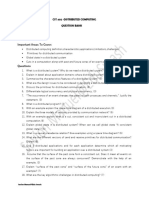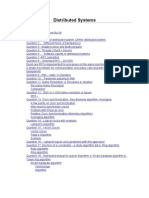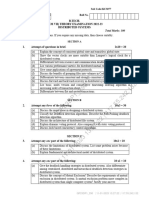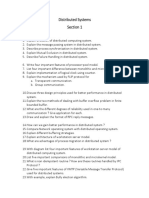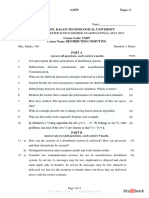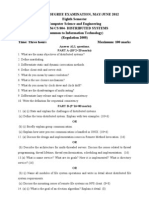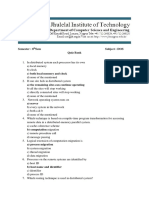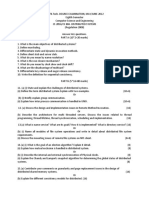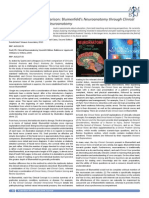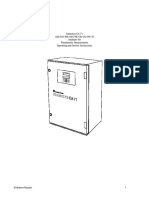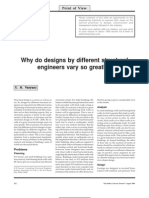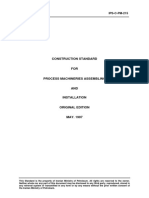0% found this document useful (0 votes)
35 views2 pagesTe Comp Distributed System 6180-51
This document is an exam paper for T.E. (Computer Engineering) on Distributed Systems, containing a total of 8 questions divided into 4 pairs, where candidates must answer one question from each pair. It covers topics such as mutual exclusion, distributed file systems, replication, consistency models, failure masking, and fault tolerance. The exam has a duration of 2½ hours and is worth a maximum of 70 marks.
Uploaded by
sumeetCopyright
© © All Rights Reserved
We take content rights seriously. If you suspect this is your content, claim it here.
Available Formats
Download as PDF, TXT or read online on Scribd
0% found this document useful (0 votes)
35 views2 pagesTe Comp Distributed System 6180-51
This document is an exam paper for T.E. (Computer Engineering) on Distributed Systems, containing a total of 8 questions divided into 4 pairs, where candidates must answer one question from each pair. It covers topics such as mutual exclusion, distributed file systems, replication, consistency models, failure masking, and fault tolerance. The exam has a duration of 2½ hours and is worth a maximum of 70 marks.
Uploaded by
sumeetCopyright
© © All Rights Reserved
We take content rights seriously. If you suspect this is your content, claim it here.
Available Formats
Download as PDF, TXT or read online on Scribd
/ 2










